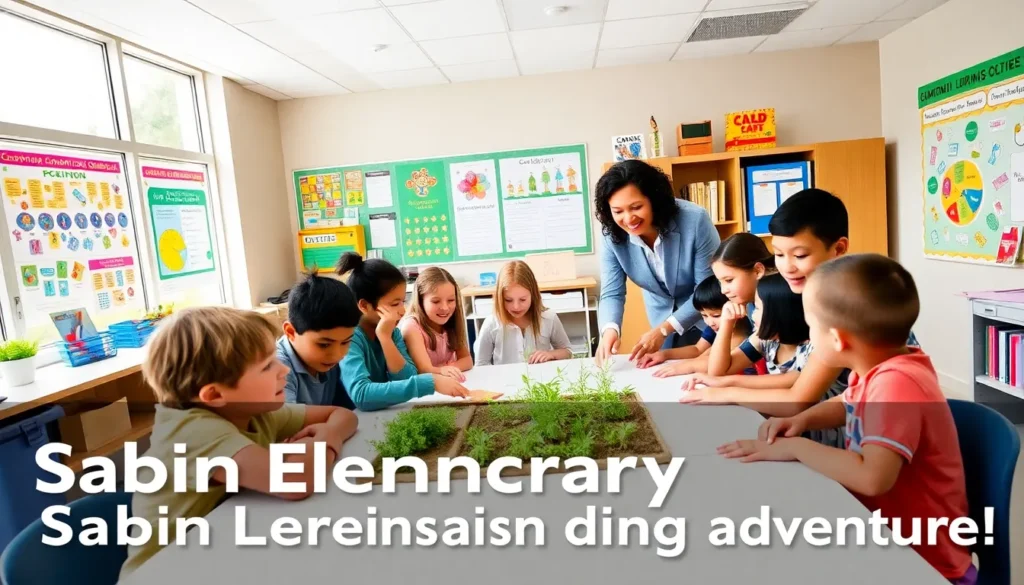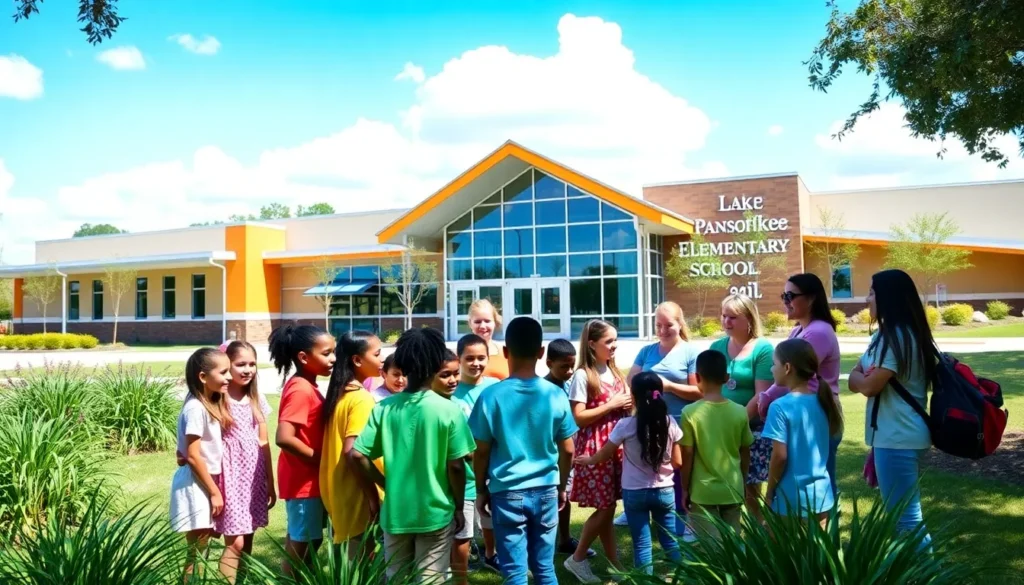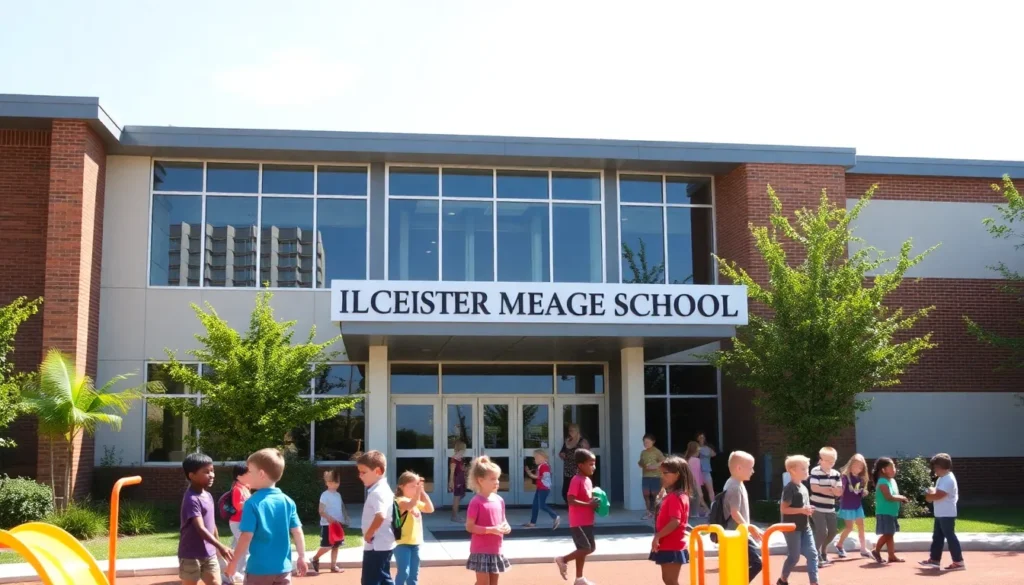Navigating the school environment can be a daunting experience for students, educators, and parents alike. From academic pressures to social dynamics, various challenges can impact a child’s educational journey. Understanding these common hurdles is crucial for fostering a supportive atmosphere that encourages growth and resilience.
Students face issues such as bullying, time management, and learning disabilities, all of which can hinder their academic performance and overall well-being. Educators often grapple with classroom management, diverse learning needs, and the pressure to meet standardized testing requirements. By addressing these challenges head-on, schools can create an environment where every student has the opportunity to thrive.
Table of Contents
ToggleOverview of Common School Challenges
Common school challenges impact students, educators, and parents significantly. These hurdles can hinder academic success and overall well-being. Below are key challenges frequently encountered in school environments.
- Bullying
Bullying affects students’ mental health. It can lead to anxiety, depression, and decreased academic performance. Recognizing and addressing bullying is crucial for creating a safe school atmosphere.
- Time Management
Time management presents difficulties for many students. Balancing homework, extracurricular activities, and personal responsibilities requires effective organizational skills. Students struggle to prioritize tasks and may experience stress when deadlines approach.
- Learning Disabilities
Learning disabilities impact students’ ability to process information. Conditions such as dyslexia and ADHD can hinder academic achievement. Early identification and tailored support are essential for helping students succeed.
- Classroom Management
Educators face challenges in maintaining classroom discipline. Disruptive behavior can interfere with the learning environment. Implementing clear rules and engaging teaching methods can help manage classroom dynamics effectively.
- Diverse Learning Needs
Addressing diverse learning needs poses a significant challenge. Students come from various backgrounds and possess different learning styles. Educators must adapt teaching strategies to accommodate individual differences, ensuring every student has access to quality education.
- Parental Involvement
Parental involvement plays a critical role in student success. However, barriers such as work commitments and lack of communication can limit participation. Foster strong partnerships with parents to promote student engagement and achievement.
- Mental Health Issues
Mental health concerns affect many students. Anxiety, depression, and stress can hinder concentration and performance. Schools must prioritize mental health resources and support systems to help students navigate these challenges.
By understanding and addressing these common school challenges, stakeholders can create a more supportive and effective educational environment.
Academic Challenges

Students frequently face academic challenges that affect their performance and engagement. These challenges include struggles with curriculum and insufficient study skills.
Struggles with Curriculum
Curriculum issues can significantly impact students’ learning experiences. Students may find the content challenging due to its complexity or lack of relevance. Different students grasp concepts at various paces. Consequently, some may fall behind if the curriculum does not accommodate diverse learning styles. State standards often dictate curriculum rigor, which may exceed some students’ abilities or interests. It’s essential for educators to tailor lessons and provide supplemental resources, ensuring all students can engage with the material effectively.
Insufficient Study Skills
Insufficient study skills often hinder academic success. Without effective techniques, students struggle to retain information and manage their time efficiently. Poor study habits, such as cramming or multitasking, lead to decreased retention and comprehension. Students may not know how to create study plans or prioritize tasks, resulting in overwhelming workloads. Instruction on effective study skills, including note-taking methods and active reading strategies, is crucial. Training in these areas can help students develop confidence and improve overall academic performance.
Social Challenges
Social challenges within the school environment significantly impact students’ daily experiences. Two primary aspects include bullying and peer pressure, along with the necessity of building healthy relationships.
Bullying and Peer Pressure
Bullying affects one in five students, according to the National Center for Educational Statistics. Verbal, physical, and cyberbullying can lead to anxiety and depression. Peer pressure often compounds these issues, influencing students to engage in risky behaviors, such as substance use or academic dishonesty, to fit in with their peers. Addressing these issues requires schools to implement anti-bullying policies and educational programs that promote empathy and inclusiveness.
Building Healthy Relationships
Building healthy relationships among students fosters a positive school climate. Students benefit from structured activities that promote teamwork and communication. Programs like peer mentoring and conflict resolution training provide students with the tools to navigate social dynamics effectively. Encouraging open dialogue about friendship and respect empowers students to cultivate supportive networks, enhancing their overall school experience.
Behavioral Challenges
Behavioral challenges significantly affect students’ academic performance and overall well-being. These issues can manifest in various forms and require targeted strategies for effective management.
Attention and Focus Issues
Attention and focus issues, prevalent among students, can hinder learning outcomes. Conditions like Attention Deficit Hyperactivity Disorder (ADHD) affect approximately 5% of school-aged children. Students with ADHD often struggle to concentrate, leading to incomplete assignments and reduced participation in class. Implementing structured routines, breaking tasks into smaller segments, and utilizing tools like timers can help improve focus. Classroom accommodations, such as preferential seating or minimizing distractions, create environments conducive to learning. Regular communication with parents about these strategies can foster a collaborative approach to address attention challenges effectively.
Discipline and Conduct Problems
Discipline and conduct problems can disrupt the learning environment. Research indicates that disruptive behavior affects not only the student involved but also classmates, compromising overall classroom dynamics. Common issues include talking out of turn, defiance, and stealing, with 50% of teachers reporting behavioral challenges in their classrooms. Establishing clear behavior expectations and consistent consequences promotes accountability and respect. Positive reinforcement techniques, such as rewarding good behavior, can motivate students to adhere to guidelines. Additionally, providing social-emotional learning programs equips students with vital skills for self-regulation and interpersonal interactions, fostering a more productive school atmosphere.
Emotional Challenges
Emotional challenges significantly impact students’ academic performance and well-being. Addressing these challenges requires understanding specific issues like anxiety, stress, and coping mechanisms.
Anxiety and Stress Management
Anxiety affects approximately 31.9% of adolescents, leading to difficulties in concentration and disruptive behaviors. Stress can result from academic pressures, social interactions, and family expectations. Implementing school-wide initiatives that promote mental health is essential. Strategies include mindfulness practices, stress management workshops, and counseling services. These programs assist students in recognizing stressors and developing coping techniques, such as deep breathing exercises and time management skills. Additionally, fostering a supportive environment encourages open discussions about mental health, reducing stigma and promoting resilience among students.
Coping with Failure and Setbacks
Experiencing failure can evoke feelings of inadequacy and anxiety in students. Research indicates that students who learn to cope with setbacks demonstrate higher resilience and improved academic outcomes. Teaching effective coping strategies is vital in schools. Encouraging a growth mindset helps students to view challenges as opportunities for learning rather than as failures. Providing frameworks for setting realistic goals and self-reflecting after setbacks fosters personal growth. Utilizing peer support groups can also enhance students’ ability to share experiences and strategies, creating a more supportive school culture that normalizes struggle and recovery.
Navigating the school environment presents a myriad of challenges for students, educators, and parents alike. Addressing issues like bullying, time management, and learning disabilities is essential for fostering a healthy academic atmosphere. By prioritizing mental health resources and encouraging open dialogue, schools can create a supportive community that promotes resilience and personal growth.
Moreover, implementing tailored teaching methods and engaging parents in the educational process strengthens the foundation for student success. Recognizing the diverse needs of each student ensures that everyone has the opportunity to thrive. Together, stakeholders can work towards overcoming these challenges, paving the way for a more effective and inclusive educational experience.









